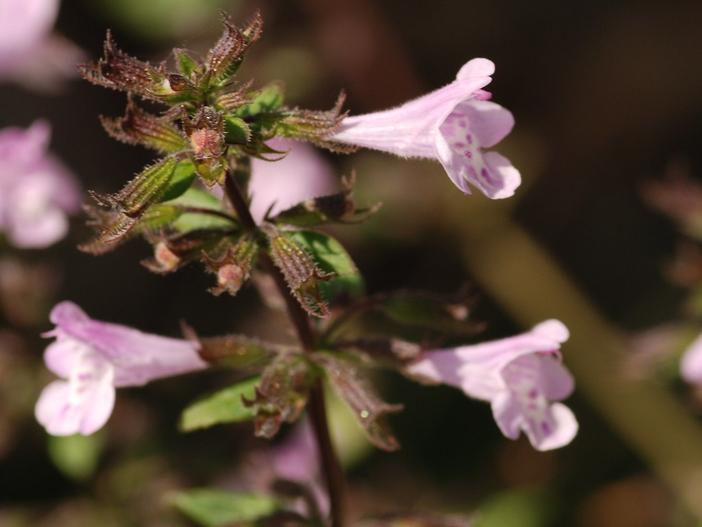Lesser Calamint
(Clinopodium nepeta)
Lesser Calamint (Clinopodium nepeta)
/
/

Antonio
CC BY-SA 2.0
Image By:
Antonio
Recorded By:
Copyright:
CC BY-SA 2.0
Copyright Notice:
Photo by: Antonio | License Type: CC BY-SA 2.0 | License URL: https://creativecommons.org/licenses/by-sa/2.0/ | Uploader: montuno | Publisher: Flickr
































Estimated Native Range
Summary
Clinopodium nepeta, commonly known as Lesser Calamint, is a perennial herb native to a range of habitats including dry grasslands, rocky slopes, and open woodlands across Europe, particularly in the Mediterranean region. It forms a compact mound reaching up to 18 inches tall and wide, with shiny, green, oregano-like leaves. From midsummer to early fall, it produces a profusion of lavender-pink flowers that are highly attractive to honeybees and butterflies, adding to its garden value. The plant’s overall appearance is characterized by its bushy habit and the delicate, minty aroma of its foliage.
Lesser Calamint is valued for its ease of maintenance, drought tolerance, and the ornamental quality of its flowers. It is often used in border plantings, rock gardens, and as a ground cover due to its compact growth habit. In cultivation, it prefers full sun to part shade, well-drained soil, and moderate watering, though it can tolerate dry conditions once established. It is also appreciated for its culinary uses, particularly in Italian and Corsican cuisine, and historically for aromatizing boiled chestnuts in Northwest Spain. While it can self-seed, it is not generally aggressive. Gardeners should be aware that it is susceptible to powdery mildew in humid conditions. To prevent this, ensure good air circulation around the plants and avoid overhead watering.CC BY-SA 4.0
Lesser Calamint is valued for its ease of maintenance, drought tolerance, and the ornamental quality of its flowers. It is often used in border plantings, rock gardens, and as a ground cover due to its compact growth habit. In cultivation, it prefers full sun to part shade, well-drained soil, and moderate watering, though it can tolerate dry conditions once established. It is also appreciated for its culinary uses, particularly in Italian and Corsican cuisine, and historically for aromatizing boiled chestnuts in Northwest Spain. While it can self-seed, it is not generally aggressive. Gardeners should be aware that it is susceptible to powdery mildew in humid conditions. To prevent this, ensure good air circulation around the plants and avoid overhead watering.CC BY-SA 4.0
Plant Description
- Plant Type: Herb
- Height: 1-1.5 feet
- Width: 1-2 feet
- Growth Rate: Moderate
- Flower Color: Pink
- Flowering Season: Summer, Fall
- Leaf Retention: Semi-deciduous
Growth Requirements
- Sun: Full Sun
- Water: Medium
- Drainage: Medium
Common Uses
Border Plant, Butterfly Garden, Fragrant, Groundcover, Low Maintenance, Potted Plant, Street Planting
Natural Habitat
Native to dry grasslands, rocky slopes, and open woodlands across Europe, particularly in the Mediterranean region
Other Names
Common Names: Calamintha
Scientific Names: , Clinopodium nepeta, Calamintha hybrida, Calamintha nepeta, Calamintha nepeta subsp. byzantina, Calamintha officinalis subsp. nepeta, Calamintha officinalis var. nepeta, Calamintha parviflora, Calmintha nepeta, Faucibarba parviflora
GBIF Accepted Name: